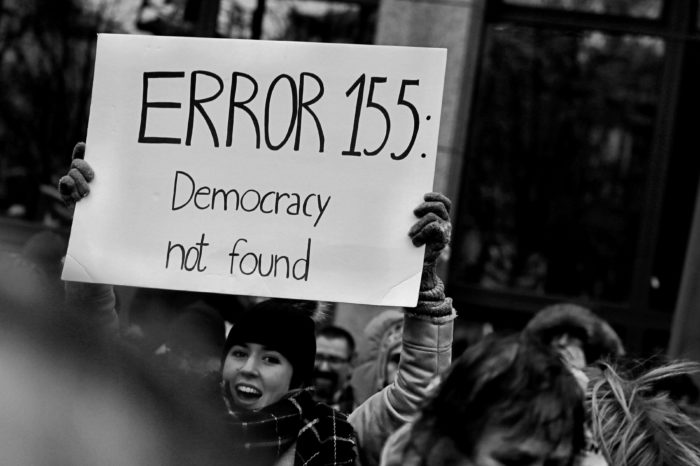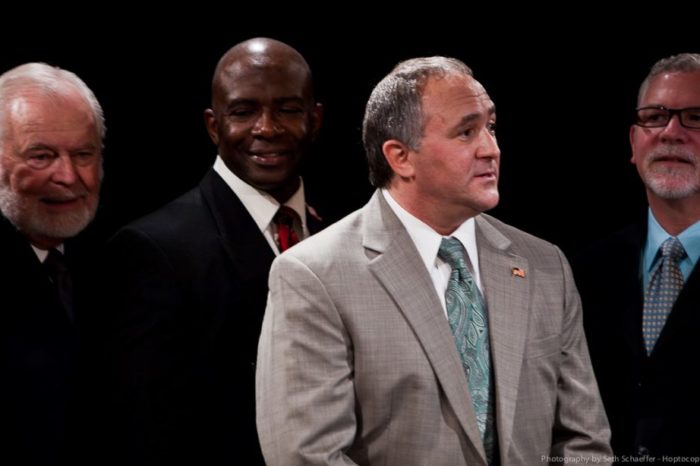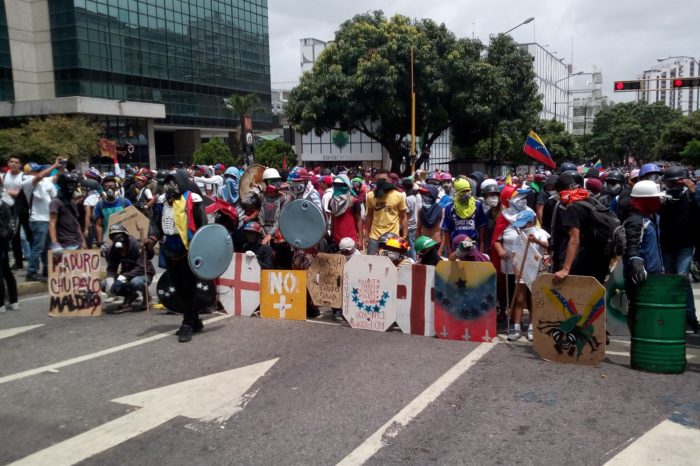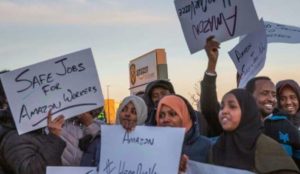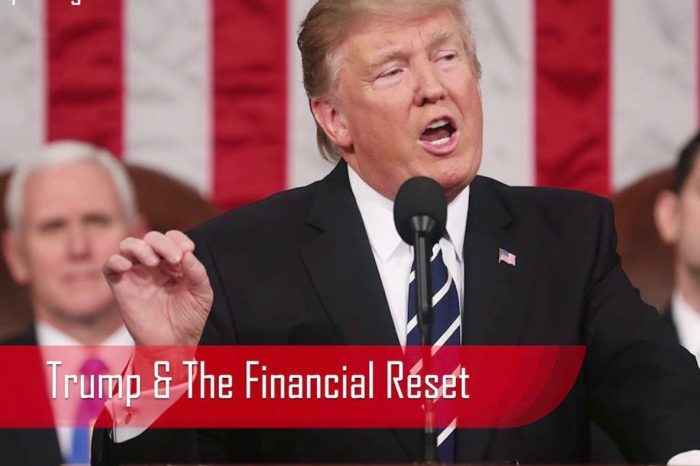OPEN BORDERS FACILITATE AMERICA’S RACE TO THE BOTTOM: “Cheap labor” is anything but cheap.
For decades the United States government, on all levels, has betrayed its own citizens, promoting open borders policies that have come to undermine national security, public safety, public health, and jobs and wages for American workers.
The massive influx of alien children who lack English language proficiency also has a profound impact on the education of American kids. Increasingly schools across the United States are forced to provide costly ESL (English as a Second Language) services draining funds that could and should be used to provide quality education for American children. Additionally, as autism rates soar and with it the growing need for special services and early intervention for such learning challenged children, money that should be spent on those vital programs that could help so many of those children live better and more productive lives is being used, instead, to fund those ESL programs for illegal aliens and frequently the children of illegal aliens who do not speak English in their homes.
When early intervention is withheld from at-risk students, the results are frequently catastrophic, yet with all of the emotional arguments posed by the immigration anarchists who call for compassion for illegal aliens, their calls for compassion utterly disregard the plight of American children.
Open borders policies permit huge numbers of foreign workers to enter the United States and displace American workers, not because American’s “won’t do these jobs” as claimed by the duplicitous politicians, but because these foreign workers are willing to accept lower wages and worse conditions than would the American workers whom they displace.
We can all think back to the days when we were growing up and sought our very first jobs to provide us with some spending money, enabling us to put our foot on the bottom rung of the economic ladder.
We often encountered the conundrum of not being able to get a job without a reference. In order to get a reference we had to have a previous employer vouch for us. This made getting that very first job all the more difficult and, at the same time, all the more important.
I remember my first job, when I was 14 yeas old, working during my summer vacation in a Kosher delicatessen, a short bike ride from home in Brooklyn where I washed dishes, fried potatoes and served hot dogs at the counter, waited on tables and delivered sandwiches to the women who spent hours at the nearby beauty parlors.
It was exciting and empowering to be earning money instead of asking my parents for an allowance. Although I didn’t realize it at the time, that job also provided me with an education in life lessons, teaching me to be responsible, punctual and take instructions from an employer. That job also taught me the value of money, I was far less likely to squander money when I had to work so hard to earn it.
Finally, that job provided me with that important first reference that helped me get other jobs in the future as I climbed the economic ladder to a successful life.
Many of my friends also worked in nearby restaurants. Brooklyn has no shortage of great places to eat, often small “mom and pop” restaurants and everyone of those establishments routinely hired teenagers and college students who were desperate to earn money.
Today most of those jobs in all too many local restaurants and other businesses are not taken by teenage American kids, but but illegal aliens, thereby shutting out Americans.
Consequently, these American kids are often unable to get that first job that would mean so much to them and provide them with important life lessons including a sense of self-worth and empowerment.
Unable to find legitimate employment, some kids, particularly in the poor neighborhoods, resort to committing crimes to get their hands on some money to take a girl on a date or make purchases. This often puts these teenagers on a trajectory that does not end well for them or for their communities, or for America.
Illegal alien day laborers often displace construction workers, resulting in massive unemployment for American and lawful immigrant workers, boosting the profits of their employers who hire them “off the books” and pay them extremely low wages.
The open-borders/immigration anarchists are quick to invoke arguments about the need for compassion. The reality is that there’s no compassion in the exploitation of vulnerable foreign workers nor is there compassion in the destruction of wages and jobs for Americans.
Now with the legalization of marijuana in many cities and states across the United States the issue not being raised in the media is that inasmuch as many companies test their employees for illegal drugs, it is likely that those who are encouraged to smoke marijuana will lose their jobs, perhaps leading to the globalists claiming that not only are lazy Americans not willing to take physically demanding jobs, and too dumb to take hi-tech jobs but are now too stoned to take any jobs.
The displacement of American workers is not limited to the economic bottom rung jobs. America has been increasingly importing computer programmers and other hi-tech workers from India and other countries to displace Americans.
The Democratic Party used to act in the interests of American workers and, as a part of their efforts to protect the jobs and wages of Americans, opposed the importation of foreign workers. Today, the Democratic Party no longer represents American workers and, in fact, has come to betray American workers and their families. Today’s Democratic Party insists on raising the minimum wage to $15.00 per hour to achieve “wage equality.” This works out to an annual wage of slightly more than $30,000. The question that is never asked, particularly by the mainstream media is: “with whom would these workers become equal?”
It would be one thing if they insisted on a $15.00 minimum wage to help America’s working poor. But to tout that wage as a means of achieving “wage equality” should give all Americans cause for pause.
As I noted in an article I once wrote about the veiled attack on the middle class,
The Wage Equality Deception, Alan Greenspan the former Chairman of the Federal Reserve Bank, invoked the notion of wage equality way back on April 30, 2009 when he testified before the Senate Subcommittee on Immigration, Border Security and Citizenship that was, at that time, chaired by Chuck Schumer.
The subject of the hearing was “Comprehensive Immigration Reform in 2009, Can We Do It and How?” Greenspan’s prepared testimony included this assertion:
But there is little doubt that unauthorized, that is, illegal, immigration has made a significant contribution to the growth of our economy. Between 2000 and 2007, for example, it accounted for more than a sixth of the increase in our total civilian labor force. The illegal part of the civilian labor force diminished last year as the economy slowed, though illegals still comprised an estimated 5% of our total civilian labor force. Unauthorized immigrants serve as a flexible component of our workforce, often a safety valve when demand is pressing and among the first to be discharged when the economy falters.
Some evidence suggests that unskilled illegal immigrants (almost all from Latin America) marginally suppress wage levels of native-born Americans without a high school diploma, and impose significant costs on some state and local governments.
Greenspan must not have gotten the memo- when America’s poorest workers suffer wage suppression they are likely to become homeless and, indeed, across the United States, homelessness has increased dramatically. This not only creates chaos in the lives of the homeless and their children, but imposes severe economic burdens on cities that have to cope with this disaster.
Greenspan went on to state the United States must accede to Bill Gates’ demand for more H-1B visas as Gates noted in his testimony at a previous hearing, that we are “driving away the world’s best and brightest precisely when we need them most.”
Where I come from, “the world’s best and brightest” are AMERICANS! This is what is commonly referred to as “American Exceptionalism.”
Greenspan supported his infuriating call for many more H-1B visas by the following “benefits” for America and, as you will see, the last sentence of his outrageous paragraph addresses the notion of reducing “wage inequality” by lowering wages of middle class, highly educated Americans whom Greenspan had the chutzpah to refer to as “the privileged elite”!
Consider this excerpt from his testimony:
First, skilled workers and their families form new households. They will, of necessity, move into vacant housing units, the current glut of which is depressing prices of American homes. And, of course, house price declines are a major factor in mortgage foreclosures and the plunge in value of the vast quantity of U.S. mortgage-backed securities that has contributed substantially to the disabling of our banking system. The second bonus would address the increasing concentration of income in this country. Greatly expanding our quotas for the highly skilled would lower wage premiums of skilled over lesser skilled. Skill shortages in America exist because we are shielding our skilled labor force from world competition. Quotas have been substituted for the wage pricing mechanism. In the process, we have created a privileged elite whose incomes are being supported at noncompetitively high levels by immigration quotas on skilled professionals. Eliminating such restrictions would reduce at least some of our income inequality.
Generally, the prospect of high-paying jobs incentivized American students to go on to college and acquire costly and time-consuming educations to be qualified to take those exciting and well-paying jobs. If wages for high-tech professionals are slashed, those jobs will no longer be attractive to Americans.
Greenspan, Schumer and their cohorts are determined to create a $15.00 per hour “standard wage” to be paid to all workers irrespective of education or the nature of their jobs. This is called Communism!
Many have said that the Democrats want to import immigrants who will vote for their candidates.
What is often overlooked is that the downward economic spiral caused by the massive influx of cheap alien labor pushes ever more beleaguered Americans to vote for the Democrats who promise to help the hapless, financially strapped Americans for whom, no matter how hard they may strive, the “American Dream” has become an unattainable dream.
EDITORS NOTE: This column with images originally appeared in FrontPage Magazine. It is republished with permission.







